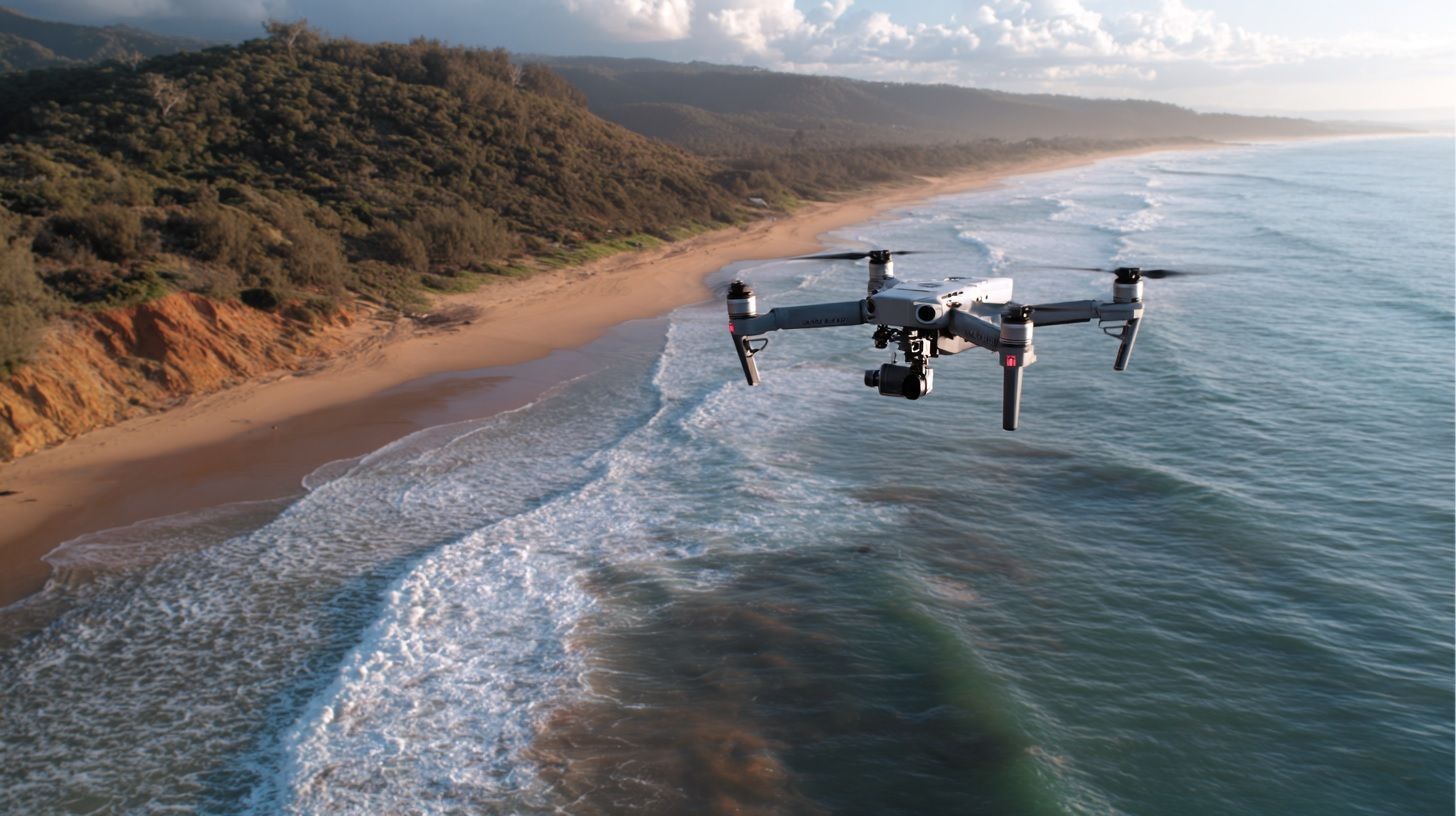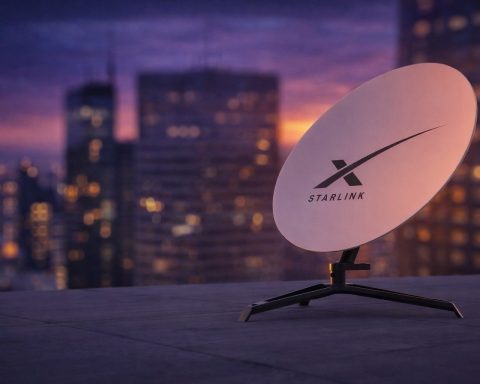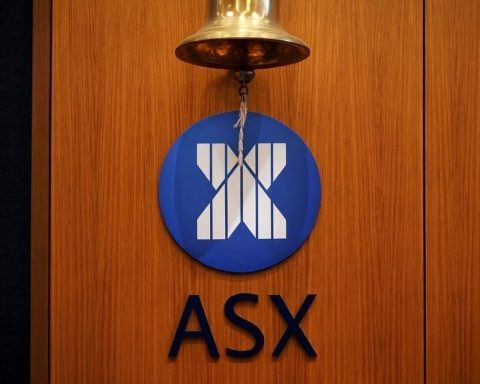- CASA regulates drones under Part 101, applying national rules across Australia with uniform standards, while state or local bylaws can add restrictions.
- Recreational drone rules include a maximum altitude of 120 meters, a 30-meter minimum distance from people, no flying over crowds, daylight and visual line-of-sight operations, and the requirement to operate only one drone at a time.
- Drones heavier than 250 grams must stay at least 5.5 kilometers from controlled airports, while drones 250 grams or lighter may fly within 5.5 kilometers up to 45 meters but cannot use airport approach or departure paths.
- Recreational pilots must respect privacy and etiquette, with CASA advising against recording people without consent and noting privacy laws may apply.
- As of 2025, purely recreational flyers do not need to register their drones or obtain a CASA drone license or accreditation.
- Commercial drones must be registered with CASA for 12 months, with registration available to those 16 years or older and per-drone certificates; drones over 500 grams incur a AUD 40 annual registration levy, while sub-500 gram drones are exempt.
- The commercial Excluded Category includes Very Small RPA of up to 2 kg that must be registered and require an RPA Operator Accreditation, with no Remote Pilot Licence required.
- The Commercial Excluded Category on private land covers drones over 2 kg up to 25 kg used on the owner’s land with payment, requiring registration and RPA Operator Accreditation while following standard safety rules.
- Licensed or advanced commercial operations require a Remote Pilot Licence (RePL) for drones over 2 kg or non-excluded, plus a Remotely Piloted Aircraft Operator’s Certificate (ReOC) in many cases, with a RePL involving formal training.
- Penalties include up to AUD 1,650 per offense for CASA infringements, up to AUD 16,500 if prosecuted in court, and up to 2 years in jail for endangering aircraft, with additional state penalties and no-fly zones such as 5.5 km around controlled airports and park or harbour restrictions.
Overview of Drone Regulations in Australia (2025)
Australia maintains a comprehensive framework for drone operations, with national rules set by the Civil Aviation Safety Authority (CASA) under Part 101 of the Civil Aviation Safety Regulations. These rules distinguish between recreational (hobbyist) use and commercial or business use of drones. At the national level, CASA’s regulations apply uniformly across all states and territories [1]. However, additional state, territory, or local bylaws can impose further restrictions in specific locations (such as parks, event venues, or sensitive sites) [2]. All drone users must adhere to CASA’s safety rules, and violations can result in substantial penalties [3]. Recent years have seen new requirements like mandatory drone registration for commercial users and pilot accreditation, reflecting Australia’s evolving approach to drone safety and accountability [4] [5].
Below we provide a detailed breakdown of Australia’s drone laws as of 2025, including the rules for recreational versus commercial flying, national CASA regulations, any regional variations, registration and licensing requirements, operational restrictions (no-fly zones, altitudes, distances), penalties for non-compliance, recent updates, and guidance for foreign visitors bringing drones into Australia.
Recreational Drone Rules in Australia
Recreational drone pilots (those flying “for fun” or personal enjoyment) must follow CASA’s standard drone safety rules at all times [6] [7]. These rules are designed to ensure the safety of other people, property, and aircraft. Key regulations for hobbyist operators include:
- Max Altitude 120 m: Do not fly higher than 120 meters (400 feet) above ground level [8]. This altitude limit helps keep drones away from manned aircraft flight paths.
- Keep 30 m from People: Always keep your drone at least 30 meters away from other people (horizontal distance) and never fly directly over people [9]. This rule is to avoid injury – think of a 30 m “bubble” around bystanders. Note: Drones under 250 g may have certain exemptions in non-populous areas, but they still must not cause danger to people [10].
- No Flying Over Crowds or Populous Areas: You must not fly over or above populous areas such as beaches, parks, sports events, or festivals [11]. In practice, any gathering where people cannot quickly move out of the way of a drone is off-limits.
- Daytime and Line-of-Sight Only: Only fly during daylight hours and in visual line-of-sight (VLOS) of your drone [12] [13]. You should always be able to see your drone with your own eyes (not just through a camera feed or goggles) and cease operation in fog, smoke, or cloud conditions that impede visibility.
- One Drone at a Time: You may only operate one drone at a time – no swarms or simultaneous control of multiple UAVs [14].
- No Hazardous Operation: Do not fly in a way that creates a hazard to another aircraft, person, or property [15]. For example, give way to all manned aircraft and never fly near emergency response operations like firefighting, accidents, or police incidents [16].
- Restricted Airspace and Airports: Stay well clear of airports and aircraft flight paths. For controlled airports with a control tower, recreational drones over 250 g must not be flown within 5.5 km of the airport [17]. Drones 250 g or under have a slight concession – they may fly within 5.5 km of a controlled airport up to a height of 45 m, but still outside the airport boundary and never in a manner that hazards aircraft [18]. Regardless of weight, never fly in the approach or departure paths of any airport. Near uncontrolled aerodromes or helicopter landing sites, you may operate but must be vigilant: if you become aware of a manned aircraft (plane or helicopter) arriving or departing, move away immediately and land safely [19].
- Privacy and Etiquette: Australia’s drone rules incorporate respecting privacy. CASA advises not to record or photograph people without consent, as other laws (surveillance devices, privacy acts) may apply [20] [21]. While not a specific aviation rule, recreational pilots should be mindful of privacy, noise, and not causing nuisance to the community.
Registration and licensing: As of 2025, purely recreational flyers do not need to register their drones or obtain a drone license/accreditation [22] [23]. CASA had planned to introduce mandatory registration for recreational drones over 250 g (with an online test requirement) in 2023, but this initiative was paused by the Australian Government [24]. Therefore, hobbyist pilots can fly without registering their aircraft, provided it’s only for sport or recreation. They also do not need an operator accreditation or remote pilot license (these are required only for commercial usage) [25]. Recreational drone clubs and model aircraft fields do exist, and if flying at a CASA-approved model airfield or club, you must still obey field rules and the standard CASA safety rules [26].
In summary, if you’re flying for fun: keep your drone under 120 m altitude, away from people and airports, within sight, only in safe areas, and no regulatory paperwork is needed (no registration, no license) [27]. Just fly safely and courteously. But the moment you use a drone for any form of work, hire, or income – different rules apply (see next section).
Commercial Drone Regulations in Australia
Using a drone for business, work, or any commercial purpose in Australia triggers additional legal requirements. CASA terms these as RPA (Remotely Piloted Aircraft) operations for hire or reward, and they enforce stricter rules on registration, pilot qualifications, and operational approvals. Any drone used as part of your job or for profit must be registered, regardless of its weight [28], and the operator must be appropriately licensed or accredited. Below is an overview of commercial drone categories and requirements:
| Operation Category | Drone Weight | Registration Required | Pilot Credentials Required | Notes |
|---|---|---|---|---|
| Recreational Use (personal/hobby) | Any weight (0–150+ kg) | No (rec. reg. not required as of 2025) [29] [30] | None (No CASA accreditation or license needed) [31] | Must follow all standard safety rules; purely non-commercial flying. |
| Commercial – Excluded Category (Very Small RPA) | ≤ 2 kg (sub-2kg drones) | Yes (must register with CASA) [32] | RPA Operator Accreditation (online test) [33] (RePL license not required) [34] | Sub-2kg drones can be flown for business without a Remote Pilot Licence (RePL) [35]. Must follow standard operating conditions (same rules as recreational) [36]. Examples: real estate or wedding photographers using a DJI Phantom or Mavic-size drone. |
| Commercial – Excluded Category (Small RPA on Private Land) | > 2 kg up to 25 kg, on your own land, no payment | Yes (register each drone) [37] | RPA Operator Accreditation (no RePL needed) [38] [39] | Allowed for landholders using heavier drones on their own property for business operations without remuneration [40] [41] (e.g. a farmer inspecting crops with a 15 kg drone). Must follow standard rules, keep required flight records [42], and cannot receive payment for these flights. |
| Commercial – Licensed RPA Operations | > 2 kg (or any weight if not eligible for “excluded” categories above) | Yes (register all drones) [43] | Remote Pilot Licence (RePL) for the pilot [44]; and usually a Remote Operator Certificate (ReOC) for the business or employer. | This covers most commercial scenarios: e.g. professional drone service companies, larger drones, or flights outside standard conditions. A RePL requires formal training and certification on the specific type of drone. The business or operator needs a ReOC (or the pilot must operate under someone else’s certified company) to conduct advanced operations. RePL pilots are exempt from the basic accreditation (since licensing is a higher credential) [45] [46]. Advanced operations (beyond visual line of sight, night flying, etc.) require CASA authorization on top of these certifications. |
Registration of Commercial Drones: Registration with CASA is mandatory for all drones used commercially, regardless of size [47]. Registration is done via CASA’s online portal (myCASA) and is valid for 12 months [48]. The registrant (individual or company) must be 16 years or older [49]. A unique registration certificate is issued per drone, and you must be able to produce this proof if asked by CASA or police [50]. There is a small annual fee (called a registration levy) for commercial drones: currently AUD $40 per drone per year if the drone weighs over 500 g, while drones 500 g or under are exempt from the fee (registration is free for sub-500 g drones) [51]. Flying a work drone without registering it is a serious offense, with fines up to $16,500 possible [52].
Pilot Accreditation & Licensing: In lieu of a full pilot’s license, CASA introduced the RPA Operator Accreditation – a free online course and quiz – for small commercial operators. If you do not hold a Remote Pilot Licence, but fly drones for work (e.g. a photographer using a 1 kg drone), you are required to pass this online accreditation course (score 85% or higher on the quiz) and obtain an RPA operator accreditation certificate [53] [54]. The accreditation is valid for 3 years [55]. Accreditation is not required if you already have a RePL (licensed pilots are automatically considered qualified) [56], and it is also not applicable to pure recreational flying [57]. In practice, the accreditation covers understanding of basic airspace rules, safety practices, and your legal obligations.
For more advanced or large-scale operations, a Remote Pilot Licence (RePL) is needed. Getting a RePL involves formal training through a CASA-certified UAV training provider and demonstrates a higher level of proficiency. A RePL is mandatory if you want to: fly drones larger than 2 kg for business (outside the limited private landholder scenario) [58], fly medium-sized RPA (25–150 kg, which also requires a RePL even on your own land) [59], or conduct operations outside the standard rules (e.g. flying at night, beyond line-of-sight, or over people – all of which need special approvals and typically a licensed operator). Organizations or individuals doing extensive commercial work may also need a Remotely Piloted Aircraft Operator’s Certificate (ReOC), which is essentially an aviation operator’s license for running a drone business (covering manuals, safety systems, insurance, etc.). Many independent commercial pilots operate under the umbrella of a company or umbrella ReOC holder rather than obtaining their own ReOC.
Standard Operating Conditions: Note that even for commercial flights, unless you have specific additional approvals, you must still abide by the standard operating conditions (SOC) – which are basically the same baseline rules as for recreational flying (120 m max altitude, VLOS only, daylight only, 30 m from people, etc.) [60]. Flying commercially does not give permission to break those rules without CASA’s explicit approval. The “excluded” commercial categories (sub-2kg and landholder operations) explicitly require you to follow the standard drone safety rules at all times [61] [62]. If a commercial mission requires going beyond those limits (for instance, inspecting a structure at night or flying closer than 30 m to people with a drone under 2 kg), the operator would need to seek a special CASA approval or exemption for that operation, which usually only a ReOC holder can apply for.
In summary, commercial drone use in Australia is heavily regulated: every drone must be registered annually, and the pilot must either hold an accreditation (for small RPA) or a remote pilot license (for larger/advanced operations). These requirements were phased in around 2020–2021 and are now fully enforced [63] [64]. If you only fly drones recreationally, you are exempt from registration and licensing; but the moment you “fly for work” – even something like monetizing your drone photos – you must comply with the commercial requirements.
No-Fly Zones and Flight Restrictions
In addition to the general altitude and distance rules mentioned earlier, Australian drone laws impose certain no-fly zones and airspace restrictions to protect sensitive areas and traditional aviation. It’s crucial for drone operators to be aware of where they cannot fly, or where flight requires special permission.
- Airports and Aerodromes: As noted, a 5.5 km radius exclusion zone applies around controlled airports for drones heavier than 250 g [65]. This effectively makes the airspace near major airports a no-fly zone for standard drone operations. Smaller uncontrolled airfields and helicopter pads are not strict no-fly zones, but require extreme caution – if any crewed aircraft are nearby, the drone must yield right of way and land [66]. Flying inside an airport’s boundaries or in approach/departure corridors without approval is strictly prohibited. Drone pilots can use CASA’s drone safety apps (such as “OpenSky” or CASA’s “OK2Fly”) to check airspace maps and ensure they are not in restricted airspace [67] [68].
- Prohibited & Restricted Airspace: Certain areas of airspace are designated as prohibited, restricted, or controlled for national security or military reasons. Examples might include defense bases, some government installations, or temporary restricted airspace for events. These will show up in drone safety map apps as red zones. You must not fly in these areas unless you have specific authorization (which hobbyists generally cannot obtain). Always check the airspace status of your location.
- Populous Areas / Over People: CASA’s rules create an effective no-fly zone above any gathering of people – you cannot fly over crowds, festivals, sporting events, busy beaches, or populated parks [69]. Even if you’re 120 m high or below, flying over people who aren’t involved in the operation is illegal. Maintain that 30 m radius separation horizontally, and remember that overflight is not allowed either (no hovering above a person or group).
- Emergency Sites: It’s a no-fly rule to go near public safety or emergency operation areas. For instance, if there’s a bushfire and firefighting aircraft are operating, or a traffic accident with police on scene, keep your drone well away [70]. Not only could you interfere with lifesaving operations, but doing so can incur significant fines. During bushfire season, temporary no-fly zones are often declared over firefighting zones for all unauthorised aircraft (drones included) – and violating those could lead to prosecution.
- National Parks and Wildlife Areas: Many Australian states ban or restrict drone use in national parks and nature reserves. These are not CASA airspace rules per se, but rather state environmental regulations. For example, drones are prohibited in Kakadu National Park (NT) and in Uluru–Kata Tjuta National Park without a permit [71] [72]. NSW National Parks generally do not allow recreational drone flying in parks unless a permit is obtained for certain areas [73]. Other states have similar policies – e.g., Queensland and Victoria require permits for park flights, Tasmania and WA restrict drones in their parks, etc. Always check the park’s regulations or seek permission from park authorities before flying in these areas [74] [75]. Wildlife disturbance laws also mean you should not harass animals with your drone (for instance, flying low near wildlife or marine animals is unlawful).
- Urban No-Fly Zones & Sensitive Sites: Certain urban locations have special restrictions. One prominent example is Sydney Harbour and its surrounds, which is a “no-drone zone” for recreational pilots [76]. This is due to intensive low-altitude traffic by seaplanes and helicopters around the harbour, as well as the area being under controlled Class C airspace for Sydney Airport. In practice, downtown Sydney, including the Opera House and Harbour Bridge vicinity, is off-limits unless you have specific CASA approval. Canberra’s Parliament House precinct is another sensitive location; drones are banned around the parliamentary triangle for security reasons [77]. Sydney Olympic Park in NSW has bylaws prohibiting unauthorised drone flights [78]. Major event venues (like stadiums during concerts or sports matches) often become temporary no-fly zones under state “major event” acts [79]. Furthermore, flying near correctional facilities (prisons) is illegal in many jurisdictions due to the risk of contraband drops; several states have laws forbidding drone flights over or near prisons [80].
- Use a Drone Safety Map: Given the patchwork of local restrictions, CASA and the federal Department of Infrastructure have released tools like the Local Drone Rules Map [81]. This interactive map highlights local council and state rules (e.g., park restrictions, prison no-fly zones, etc.) in various areas. It’s wise to consult these tools or local council websites if you plan to fly in an unfamiliar area. A CASA-verified drone safety app will combine the airspace restrictions with known local rules to give you a “green zone / red zone” style map of where you can fly [82] [83].
- Night Operations: Flying at night is not allowed under standard rules for recreational or excluded-category pilots [84]. Night flying requires a specific approval or certification (typically, commercial operators with a ReOC can apply for nighttime flight permission after demonstrating proper training and lighting on the drone). So for most users, after sunset your drone must stay grounded.
In summary, always plan your flight location carefully. If uncertain, assume an area might have restrictions and do the research – check CASA’s app for airspace rules and local council or park authority for ground restrictions. The combination of national and local rules means some places you’d think are great for drone photography (like a famous landmark or a serene national park) might actually be illegal to fly in without a permit. Flying in a declared no-fly zone or restricted area can result in significant penalties, as outlined next.
Penalties for Violating Drone Laws
Australia enforces its drone regulations with fines and other penalties to encourage compliance. Both CASA and local authorities (like police or park rangers) have powers to penalize unlawful drone use. Here’s what you risk if you break the rules:
- CASA Infringement Fines: CASA safety inspectors or police can issue on-the-spot fines (infringement notices) for breaches of the drone safety rules. These fines can be up to AUD $1,650 per offense [85]. For example, if you fly above 120 m or over a crowd, you could receive a fine in that range. Each rule breached may count separately, so multiple violations in one flight (e.g., high altitude + over people + near an airport) can compound into multiple fines.
- Serious Offenses (Court Prosecution): For more serious or deliberate breaches, CASA can prosecute the offender in court (often via the Commonwealth Director of Public Prosecutions). In such cases, the maximum fines can reach $16,500 per offense as determined by a judge [86]. This higher penalty might apply if, for instance, a drone flight caused a near-miss with an aircraft or was a repeat offense. The $16,500 figure aligns with the maximum penalty units set in the regulations [87].
- Jail for Endangering Aircraft: If a drone operation endangers a manned aircraft – for example, a drone flown in a flight path causing a risk of collision – it’s not just a fine. Australian law allows for criminal charges; you can face up to 2 years imprisonment for endangering the safety of an aircraft [88]. This would likely be invoked in egregious cases (for example, a drone interfering with a rescue helicopter or approaching a passenger aircraft). Similarly, interfering with emergency services (like flying near a wildfire where water-bombers are operating) can lead to very hefty penalties and potentially jail under broader public safety laws.
- Flying Unregistered or Unlicensed: Specific penalties apply for failing to register a commercial drone or to obtain required accreditation/license. Flying an unregistered drone in commercial operations can incur a fine up to $16,500 as noted above [89]. Operating commercially without holding an RePL or accreditation when required can also lead to large fines. After the grace period ended in 2021, CASA indicated fines up to $11,100 could be applied for unaccredited commercial flying [90] (this figure may be adjusted over time in line with penalty unit indexation). In practice, CASA could issue the standard $1,650 infringement for a first-time caught unregistered/unlicensed flyer, but repeat or intentional violators risk higher action.
- License or Accreditation Actions: Beyond monetary fines, CASA can suspend or cancel your RPA operator accreditation, remote pilot license, or even your drone’s registration if you violate rules egregiously [91]. For example, a licensed operator caught doing reckless flights might lose their RePL, which would bar them from commercial flying until they regain it.
- State-Level Penalties: If you violate state or local laws (for instance, flying in a national park without a permit, or over a prison), you could face fines under those laws as well. State penalties vary: a ranger could issue a few hundred dollar fine for a park violation, whereas a breach of a “major event no-fly zone” declared by a state might incur thousands of dollars in fines. These would be in addition to any CASA fines if both laws were broken. Essentially, you could be answering to two authorities: CASA (for aviation safety rules) and the state (for local restrictions).
As an example, CASA encourages the public to report unsafe drone flying, and notes that fines of up to $1,650 can be issued per offense on-the-spot, or up to $16,500 if the matter goes to court [92]. These penalty amounts underscore how important compliance is. In short: don’t risk it. It’s far cheaper and safer to fly within the rules than to face these fines or legal consequences.
Recent Changes and Updates (2020–2025)
Drone regulations in Australia have evolved significantly in the past few years. Here are some of the notable changes and updates leading up to 2025:
- Introduction of Mandatory Drone Registration (2020–2021): Australia rolled out mandatory registration in phases. Starting in late 2019, CASA required all commercial (business-use) drones to be registered, and by January 28, 2021 this became fully enforced [93] [94]. Commercial operators were given a grace period (registration was free if completed before mid-2021) [95]. After that, flying an unregistered work drone could trigger fines. Recreational drones were initially slated to require registration as well, but that was delayed (see next point).
- Recreational Registration Postponed: CASA had planned a recreational drone registration scheme for drones over 250 g, coupled with an online education module, originally expected by 2020 then pushed to 2022–2023. In mid-2023, the Australian government announced a pause on implementing recreational drone registration [96]. The result is that, as of 2025, hobby flyers still do not have to register their drones. The pause was to allow further review of the scheme’s necessity and impact. It’s wise to stay tuned, as this requirement could be revisited in the future if policymakers decide to proceed with it.
- Online Pilot Accreditation (since 2020): Along with registration, CASA introduced the online “RPA Operator Accreditation” in 2020 as a quick way to qualify small-drone commercial pilots. This became a requirement for any commercial flyer without a RePL license [97]. The process is entirely online, free, and fairly accessible – a clear indication of CASA’s efforts to integrate drones into the regulatory system without over-burdening small businesses. By 2025, thousands of operators have completed this accreditation to legally fly sub-2kg drones for work.
- Updated Fines and Enforcement Practices: Over recent years, CASA has updated its enforcement approach. They have deployed drone detection systems (particularly around major events and airports) and have been increasingly “tech-savvy” about catching illegal flights [98]. CASA can detect drone radio signals around sensitive events (e.g., they monitored Sydney’s Vivid Festival with drone detectors) [99]. The public reporting system (“Report Unsafe Flying” on CASA’s site) has also been emphasized [100]. In 2022, CASA updated regulations (CASR Part 101 amendments) to clarify certain rules – for example, explicitly excluding sub-250g drones from some requirements (as hinted by discussions on populous areas rule exemptions for micro drones) [101] [102]. While fines amounts ($1,000–$1650) have remained relatively steady for minor breaches, CASA has signaled it will “toughen up” on enforcement using new technology and potentially implementing remote ID in the future [103].
- Towards Drone Traffic Management and Remote ID: Though not yet law in 2025, Australia has been working on frameworks for Remote Identification of drones and Uncrewed Traffic Management (UTM). CASA’s roadmap for integrating drones into airspace (including future Advanced Air Mobility vehicles) suggests that by the late 2020s, drones might be required to broadcast an electronic ID and adhere to automated air traffic systems [104] [105]. In late 2024, the Department of Infrastructure launched a prototype “drone rule digitisation” initiative and a digital drone rules map [106] [107]. While these don’t directly change user obligations yet, they set the stage for possible future rules (e.g., a mandate that larger drones have remote ID transponders once standards are set, similar to the USA’s rule). At present, Remote ID is not required in Australia [108] – but operators should be aware that changes are on the horizon as the drone ecosystem matures.
- Increased Integration of Drones (Deliveries, etc.): The years 2020–2025 have also seen Australia become a leader in drone delivery trials (Google’s Wing has active drone delivery services in Canberra and Logan, QLD). CASA has been granting permissions for these trials under strict conditions. While this is more of a commercial development than a law change, it reflects CASA’s willingness to adapt regulations for innovative uses. It also means new operational categories (like beyond-visual-line-of-sight delivery drones) are being pioneered, which could lead to new regulations or standard practices that trickle down to other drone users in the future.
In essence, the regulatory environment is dynamic. The big changes – mandatory registration and accreditation for commercial flyers – are now established. Hobbyists have a reprieve on registration for now, but should keep an ear out for any future policy changes. CASA regularly updates its “Know Your Drone” web resources and will announce any major rule changes well in advance. Staying informed through CASA’s channels is advisable for anyone active in the drone community.
Flying Drones in Australia as a Foreign Tourist
Australia is a popular destination, and many travelers want to capture its landscapes with drones. Foreign visitors are allowed to bring and fly drones in Australia, but they must follow the same rules that apply to Australian residents. There is no special tourist drone permit, but here are some important guidelines:
- Follow CASA Rules: As a tourist, you must obey all CASA drone safety rules (altitude limits, no flying over people, etc.) just like locals [109]. There is no distinction in the rules for non-residents – safety is universal.
- No License Required for Recreational Tourism: If you are only flying for recreational purposes while traveling (i.e. not doing any paid work with your drone), you do not need to obtain an Australian drone license or accreditation [110]. The hobbyist exemptions (no registration, no license) apply equally to visiting foreigners.
- Commercial Use by Visitors: If, however, you intend to use a drone for commercial purposes during your visit (for example, filming a commercial video or doing a surveying job while in Australia), you are subject to the same commercial requirements. This means your drone would need to be registered with CASA and you’d need a RePL or accreditation as appropriate. In practice, short-term visitors usually stick to recreational flying. If you did need to operate commercially, one route is to partner with or operate under a local business that has a ReOC and licenses. Otherwise, you would have to go through CASA’s process to get permissions, which is not really feasible for a brief visit. For most tourists, assume you should only fly recreationally (no money involved) to keep things simple and legal.
- Drone Registration for Foreign Drones: CASA does not allow foreign-registered drones to be registered in Australia outright [111]. This means if you already registered your drone in your home country, you can’t just transfer that registration. Instead, CASA can grant you a temporary operating permission for your drone in Australia (essentially an ad-hoc registration) if needed [112]. The process is similar to registering – you’d use the myCASA portal to request permission to fly a foreign drone. Again, if you’re only doing recreational flying, this is not required. But if a law says you must have a registered drone (which only happens if flying commercially), you’d go through this permission step. The takeaway: tourists flying just for fun do not need to register their drones in Australia [113].
- Customs and Travel: There are no bans on importing personal drones for tourism, but when bringing drone equipment on flights, remember to pack lithium batteries in carry-on luggage as required by airline safety rules [114]. Australia’s airports follow the standard IATA guidelines for batteries: typically you can carry drone batteries (usually under 100 Wh each) in your cabin baggage, with terminals protected. Always declare any unusual items if asked at customs. Recreational drones for personal use don’t incur duties, but professional gear might if it appears you’re importing for business (unlikely for a traveler with one drone).
- Know Local Restrictions: As a traveler, be especially mindful of the local no-fly zones at tourist sites. Many iconic spots are off-limits to drones. For example, Parliament House in Canberra – you might think to get a cool aerial shot, but it’s illegal. Uluru – culturally sensitive and within a park that bans drones without a permit [115] [116]. Sydney Harbour – as mentioned, it’s effectively a no-fly zone for drones due to air traffic [117]. Even Bondi Beach in Sydney – very tempting to film, but it’s a populous area with constant people (so you can’t fly over the beach legally when people are present). If you plan to visit multiple cities or states, check each area’s rules (the “Can I fly here?” function in apps or the local council websites). CASA’s advice is to download a drone safety app and research before you leave home [118] [119] so you don’t unwittingly fly somewhere prohibited.
- Insurance: While not legally required, having drone liability insurance is strongly recommended for foreign operators (and locals alike) [120]. Travel insurance policies often exclude unmanned aircraft, so you may need a specialty coverage if you want to be protected in case your drone causes damage or injury during your trip.
In summary, foreign tourists can enjoy flying in Australia as long as they stick to the recreational rules. There’s no special permit needed beyond what’s required of Aussies – no visitor license or registration in general [121]. Use common sense: avoid restricted sites, keep your drone within CASA’s limits, and be respectful of others’ privacy and Australia’s natural and cultural heritage sites. That way you’ll capture great memories without legal troubles.
Sources:
- Civil Aviation Safety Authority (CASA) – Drone Safety Rules (Know Your Drone) [122] [123]
- CASA – Drone Registration Requirements [124] [125]
- CASA – Operator Accreditation & Excluded Category Guidance [126] [127]
- CASA – Enforcement and Penalties [128]
- Australian Government Drones.gov.au – State and Territory Rules [129] [130]
- Drone Laws in Australia – Updated May 2025 [131] [132]
- CASA – Travelling with Your Drone (Visitor Guidance) [133] [134]
- Propeller Aero – CASA Changes for Commercial Drone Operations (2021) [135] [136]
References
1. www.drones.gov.au, 2. www.drones.gov.au, 3. www.casa.gov.au, 4. help.propelleraero.com, 5. drone-laws.com, 6. www.casa.gov.au, 7. drone-laws.com, 8. www.casa.gov.au, 9. www.casa.gov.au, 10. drone-laws.com, 11. www.casa.gov.au, 12. www.casa.gov.au, 13. www.casa.gov.au, 14. www.casa.gov.au, 15. www.casa.gov.au, 16. www.casa.gov.au, 17. www.casa.gov.au, 18. www.casa.gov.au, 19. www.casa.gov.au, 20. drone-laws.com, 21. drone-laws.com, 22. www.casa.gov.au, 23. drone-laws.com, 24. drone-laws.com, 25. www.casa.gov.au, 26. www.casa.gov.au, 27. www.casa.gov.au, 28. www.casa.gov.au, 29. www.casa.gov.au, 30. drone-laws.com, 31. www.casa.gov.au, 32. www.casa.gov.au, 33. www.casa.gov.au, 34. www.casa.gov.au, 35. www.casa.gov.au, 36. www.casa.gov.au, 37. www.casa.gov.au, 38. www.casa.gov.au, 39. www.casa.gov.au, 40. www.casa.gov.au, 41. www.casa.gov.au, 42. www.casa.gov.au, 43. www.casa.gov.au, 44. www.casa.gov.au, 45. help.propelleraero.com, 46. help.propelleraero.com, 47. www.casa.gov.au, 48. www.casa.gov.au, 49. www.casa.gov.au, 50. www.casa.gov.au, 51. www.casa.gov.au, 52. www.casa.gov.au, 53. help.propelleraero.com, 54. help.propelleraero.com, 55. help.propelleraero.com, 56. help.propelleraero.com, 57. help.propelleraero.com, 58. www.casa.gov.au, 59. www.casa.gov.au, 60. www.casa.gov.au, 61. www.casa.gov.au, 62. www.casa.gov.au, 63. help.propelleraero.com, 64. help.propelleraero.com, 65. www.casa.gov.au, 66. www.casa.gov.au, 67. www.casa.gov.au, 68. www.casa.gov.au, 69. www.casa.gov.au, 70. www.casa.gov.au, 71. www.drones.gov.au, 72. www.drones.gov.au, 73. www.drones.gov.au, 74. www.drones.gov.au, 75. www.drones.gov.au, 76. www.casa.gov.au, 77. www.drones.gov.au, 78. www.drones.gov.au, 79. www.drones.gov.au, 80. www.drones.gov.au, 81. www.drones.gov.au, 82. www.casa.gov.au, 83. www.casa.gov.au, 84. www.casa.gov.au, 85. www.casa.gov.au, 86. www.casa.gov.au, 87. www.casa.gov.au, 88. www.casa.gov.au, 89. www.casa.gov.au, 90. help.propelleraero.com, 91. www.casa.gov.au, 92. www.casa.gov.au, 93. help.propelleraero.com, 94. help.propelleraero.com, 95. help.propelleraero.com, 96. drone-laws.com, 97. help.propelleraero.com, 98. www.australianphotography.com, 99. www.australianphotography.com, 100. www.casa.gov.au, 101. drone-laws.com, 102. drone-laws.com, 103. www.australianphotography.com, 104. ts2.tech, 105. www.drones.gov.au, 106. www.drones.gov.au, 107. www.drones.gov.au, 108. drone-laws.com, 109. www.casa.gov.au, 110. drone-laws.com, 111. www.casa.gov.au, 112. www.casa.gov.au, 113. drone-laws.com, 114. www.casa.gov.au, 115. www.drones.gov.au, 116. www.drones.gov.au, 117. www.casa.gov.au, 118. www.casa.gov.au, 119. www.casa.gov.au, 120. drone-laws.com, 121. drone-laws.com, 122. www.casa.gov.au, 123. www.casa.gov.au, 124. www.casa.gov.au, 125. www.casa.gov.au, 126. www.casa.gov.au, 127. www.casa.gov.au, 128. www.casa.gov.au, 129. www.drones.gov.au, 130. www.drones.gov.au, 131. drone-laws.com, 132. drone-laws.com, 133. www.casa.gov.au, 134. www.casa.gov.au, 135. help.propelleraero.com, 136. help.propelleraero.com










